Facts About ‘Angel of Death’ TikTok Dangerous Challenge and How To Report It
 |
| ‘Angel of Death’ TikTok Dangerous Challenge and How To Report It |
| Table of Content |
Truck blocking is just one of many deadly challenges that have gone viral on the short video-sharing platform that has billions of users, mostly between the ages of 16-24.
Rushing to the front of the truck running on the road, if the vehicle stops before hitting the person, it will succeed. That's how many Indonesian teenagers participate in the "angel of death challenge" challenge on TikTok.
According to Insider, at least two young people have died because of this trend and many cases have suffered serious injuries.
Let’s take a look at everything you need to know about “Angel of Death”, the dangerous challenge on TikTok that will cause severe damages.
What is the “Angel Of Death” TikTok Challenge?
 |
| Photo: Thetealmango |
Tantangan Malaikat Maut (Eng. Angel of Death Challenge) refers to a social media trend in which people jump in front of a moving truck in the hopes it stops in front of them. The trend has gained attention in Indonesia and abroad due to many accidents and some deaths.
It is unknown when and where the challenge started. The earliest known example of the challenge was uploaded on March 26th, 2021 by Instagram user @kabartangsel, who uploaded a video of young people jumping in front of a moving dump truck on purpose in the hopes the truck will stop right in front of them. Instead, they are hit by the passing truck because it didn't brake in time. The video received more than 11,000 views in one year.
Over the following year, the challenge became the subject of memes criticizing and making fun those who participated in the challenge. For example on July 19th, 2021, TikTok user @kingtae.life uploaded a video about the challenge using the video game Grand Theft Auto V. The video received more than 51,000 views in one year.
Tik-Tok's 'Angel of Death' challenge takes over internet, claims lives in Indonesia
 |
| Photo: TikTok |
A new TikTok challenge has taken over the internet, and not in the best of ways. Angel of Death has entirely reversed the meaning of the term "angel," which has more often than not always had a positive connotation.
So what's with the Angel of Death challenge? As part of the dangerous online trend, individuals leap in front of speeding vehicles and defy death. The ones who survive are declared winners and the ones who don't (and die, or get gravely injured in the process) lose in the most morbid manner. This new trend has spread like wildfire on social media platforms and has gained immense popularity among Indonesian teens.
If the oncoming truck stops before hitting the challenger, the performance is judged successful. Participants video themselves taking on the perilous challenge while doing the stunt. The challenge asks participants to leap in front of a moving car, which is meant to come to a stop before striking the participant.
According to a report by Business Insider, on June 3, a kid from Tangerang was hit by a vehicle while filming the challenge for content. The day before, two teenagers in Bandung tried the Angel of Death challenge, which resulted in a truck colliding with a 14-year-old, smashing his teeth and injuring his head. Sindo News reports that so far 14 individuals in Tangerang have been arrested by the police for performing the death-defying challenge and even surviving it.
In July 2021, a teenager died while attempting to carry out the same challenge in Indonesia's Bekasi city, as per a report by CNN Indonesia.
TikTok's wild fads are nothing new. Since the app's introduction, creators have discovered bizarre methods to create content, even if it means putting their lives in danger. Before the Angel of Death, yet another dangerous viral challenge — the choking challenge — took the online platform by storm. Young individuals were reported to have deliberately held their breath naturally or using household items, and thus record themselves having survived the 'choking to death' stunt. A 10-year-old in Pennsylvania reportedly died performing the challenge, following which the deceased's mother sued TikTok and its parent company ByteDance.
Recalling the Previous Tragedies
The first TikTok tragedy happened with Chloe Phillips, a 15-year-old from Oklahoma who died of a heart attack in August 2020 after taking up the “Benadryl Challenge”, which required individuals to film themselves hallucinating from medication.
Last year, Joshua Haileyesus, 12, was discovered unconscious by his twin brother in Colorado after attempting TikTok’s “Blackout Challenge”. In this challenge, teens hold their breath until passing out on video. Joshua was pronounced brain dead and died after several days on life support.
Not just this, a girl named Nyla, 10 who lived in Pennysylvania died before year-end by participating in the same fatal challenge. Even though TikTok boasts about its user-safety policies, such challenges have become a common trend.
Why Do People Participate in Dangerous Viral Challenges?
 |
| Photo: The SportsGrail |
The milk crate challenge certainly isn’t the first dangerous social media trend to go viral, especially among teens. There have also been ones that dared people to swallow spoonfuls of dry cinnamon, ingest a laundry detergent pod, or choke themselves until they passed out—all of which can have serious health consequences. So why do people continue to put themselves in harm’s way for likes and followers?
Feeling Connected and Popular
At a basic level, viral social media challenges give people a chance to feel part of something bigger than themselves—and that’s not always a bad thing for individuals or the world at large.
The Ice Bucket Challenge, in which a person pours a bucket of ice water over their head, helped raise awareness for amyotrophic lateral sclerosis and more than $115 million in donations for the ALS Association within the first six weeks of its launch in 2014. Despite a handful of injuries, the challenge is largely considered safe and fun.
“Social media can project a feeling of community and connection, and viral challenges can gain momentum very quickly as a result,” says Jennifer Hettema, PhD, a clinical psychologist, associate professor in the department of family and community medicine at the University of New Mexico, and senior clinical director at LifeStance Health. “However, the same emotions that make you feel connected to a charitable viral challenge can make you equally motivated to participate in other more extreme viral trends that could even be dangerous.”
The willingness of many people to participate in those dangerous stunts speaks to the inherent human desire to feel connected, explains Brittany Morris, MSW, LCSW, a licensed clinical social worker from Thriveworks in Chesapeake, Virginia. And that feeling can be so strong, it can trump the risk of getting hurt doing a stunt.
“Humans have an inherent need for connection,” she says. “During the pandemic and even long before it, the Internet and social media have become safe havens for many individuals struggling to find their place socially. Online popularity feeds our egos in many ways and also makes us feel valued.”
Plus, successfully completing the challenge can feel like a “badge of honor,” adds Morris, and give a person’s an opportunity to potentially go viral, boosting their online popularity.
“A stamp of approval by another, or many others, may be seen as the main building block of one’s personal value and worth,” says Desreen N. Dudley, PsyD, a clinical psychologist and mental health quality consultant at Teladoc.
Why Social Media Challenges Tempt Teens
Watch a few videos of people doing risky social media challenges and you might notice a trend: Most of the participants are kids, teens, and young adults. While part of it can be chocked up to the younger demographics of social media users, there are also psychological and physiological explanations for many teens’ willingness to try dangerous dares.
For one, that desire to feel part of a group is especially strong during adolescence.
“Children and teens are most susceptible to these dangerous challenges because of the need for belonging. In our early teens and adolescent years, we are dying to be accepted and searching to find out a niche,” says Morris. “Aside from the natural impulsivity, curiosity, and self-centered notion of living forever, this age group wants to be validated by others, especially their peers.”
What’s more, teens’ brains are still maturing, and they’re not yet fully capable of understanding the true risks of trying dangerous stunts.
“Biological research has established that teen brains, particularly the prefrontal cortex, or decision-making and judgement portion of the brain, are not fully developed, limiting their ability to consider all pertinent factors in making a sound decision,” says Dr. Dudley. “Given this, from a psychological perspective, many youths are focused on engaging in social media actions that can gain them a popularity beyond what they can ever imagine gaining by just being the kid that is part of the ‘in crowd’ in school.”
Dr. Hettema adds: “This part of the brain does not fully mature until about age 25.”
| Experts say participating in dangerous social media trends speaks to our inherent need for belonging. And since teens’ brains are still developing, they may be unable to carefully weigh the risks when making a decision to participate in one of these stunts. Experts encourage parents and teachers to keep an eye on new social media challenges. Many are harmless, fun, and even charitable, but spotting a potentially dangerous one allows adults to warn teens about the risks involved. |
How to Report Dangerous Videos, Accounts, and Comments on TikTok
TikTok, which is currently the frontline of viral video content, is a social media app that allows people to record, edit, and share short videos. However, if you encounter any sexual, violent, or otherwise inappropriate content on the app, you can easily file a report.
How to Report a TikTok Video
As you scroll through the videos in your TikTok feed, you might see content that violates any number of the app’s rules or community guidelines, or even laws. To report a video, tap “Share” in the bottom-right corner.
 |
| Photo: howtogeek |
In the next menu, tap “Report.”
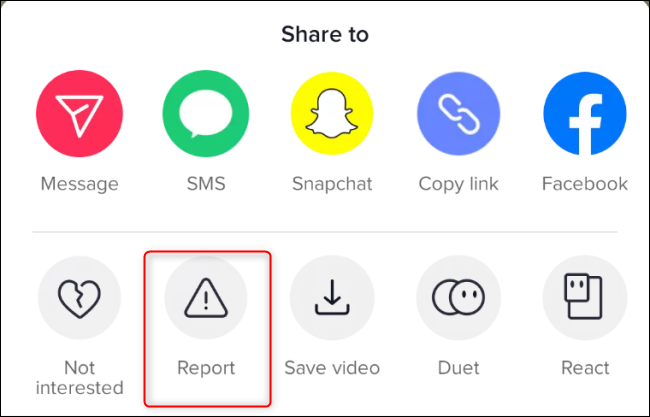 |
| Photo: howtogeek |
Select the reason for your report—you might need to choose a more specific reason on the following screen.
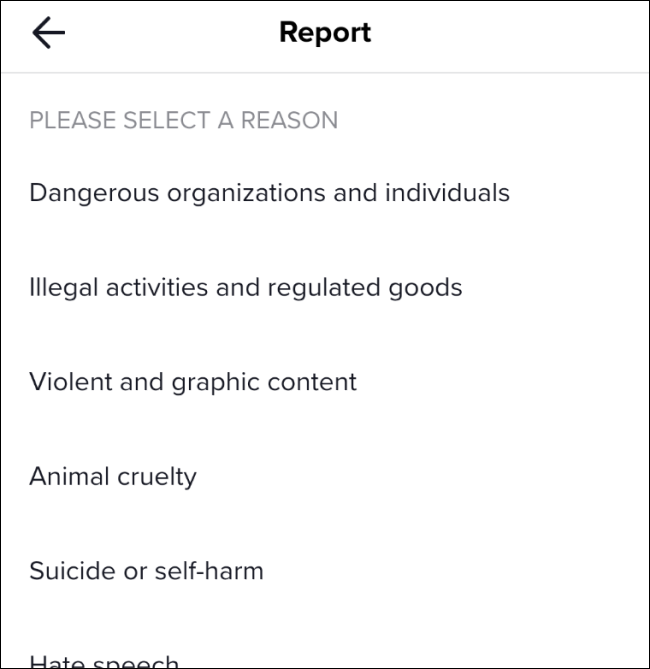 |
| Photo: howtogeek |
You can then provide screenshots and describe why you’re reporting the video. When you’re done, tap “Submit.”
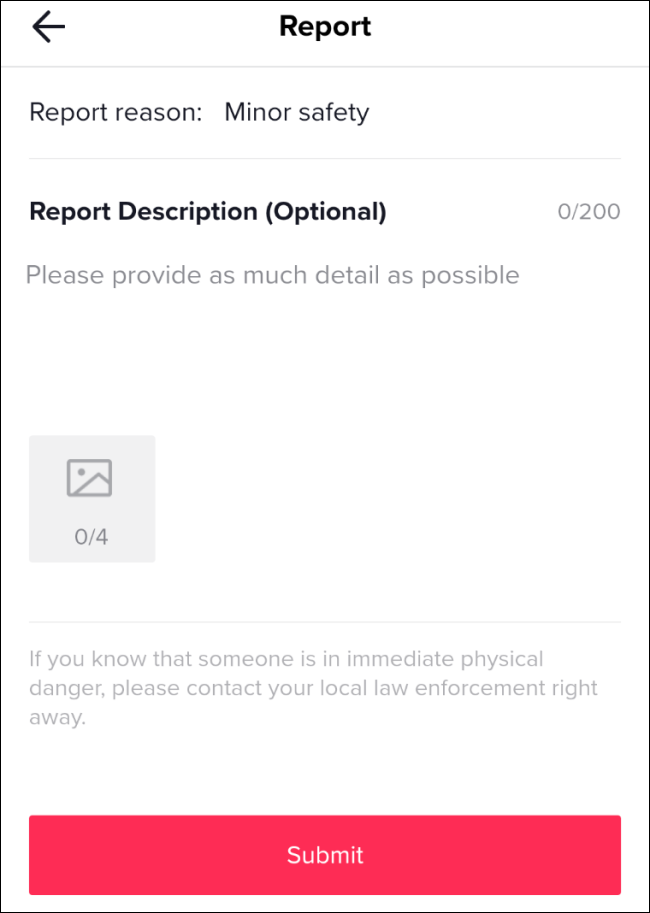 |
| Photo: howtogeek |
As stated on the final report page, if someone is in immediate physical danger, contact your local law enforcement.
If the video is appropriate content that just doesn’t interest you, tap and hold in the middle of the video until a small menu appears. From there, tap “Not Interested.”
You can also tap “More” to hide all videos either from that person or with that sound (background music or audio).
 |
| Photo: howtogeek |
How to Report a TikTok Account
If an entire account regularly posts inappropriate content or misleading information, you can report that, as well. To do so, tap the Account button (the account’s avatar).
Tap the three-dot icon at the top-right of the Account page. Select “Report,” and then select the reason for which you’re reporting the account. Again, you might need to choose a more specific reason on the following screen.
You can then provide screenshots and a description of your report. When you’re done, tap “Submit.”
How to Report a Comment on TikTok
Part of the engagement aspect of TikTok is responding to comments on videos. Like most places on the internet, people sometimes leave nasty or inappropriate messages.
To report a particular comment, tap and hold on it until a small menu appears. Select “Report” and provide the reason (and another more specific reason) for your report.
You can then add any additional comments or screenshots. When you’re done, tap “Submit” to send TikTok the report.
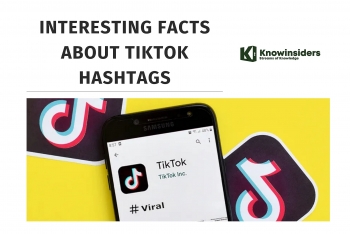 Facts About TikTok Hashtags and How to Reach the Most People Facts About TikTok Hashtags and How to Reach the Most People Master TikTok hashtags to ensure your TikTok marketing strategy makes you become an informative user. |
 How To Get The Viral Sad Face or Crying Filter on TikTok? How To Get The Viral Sad Face or Crying Filter on TikTok? The Sad Face or Crying Filter is recently trending on TikTok and has gone viral insanely. Find out what it is, and how you can ... |
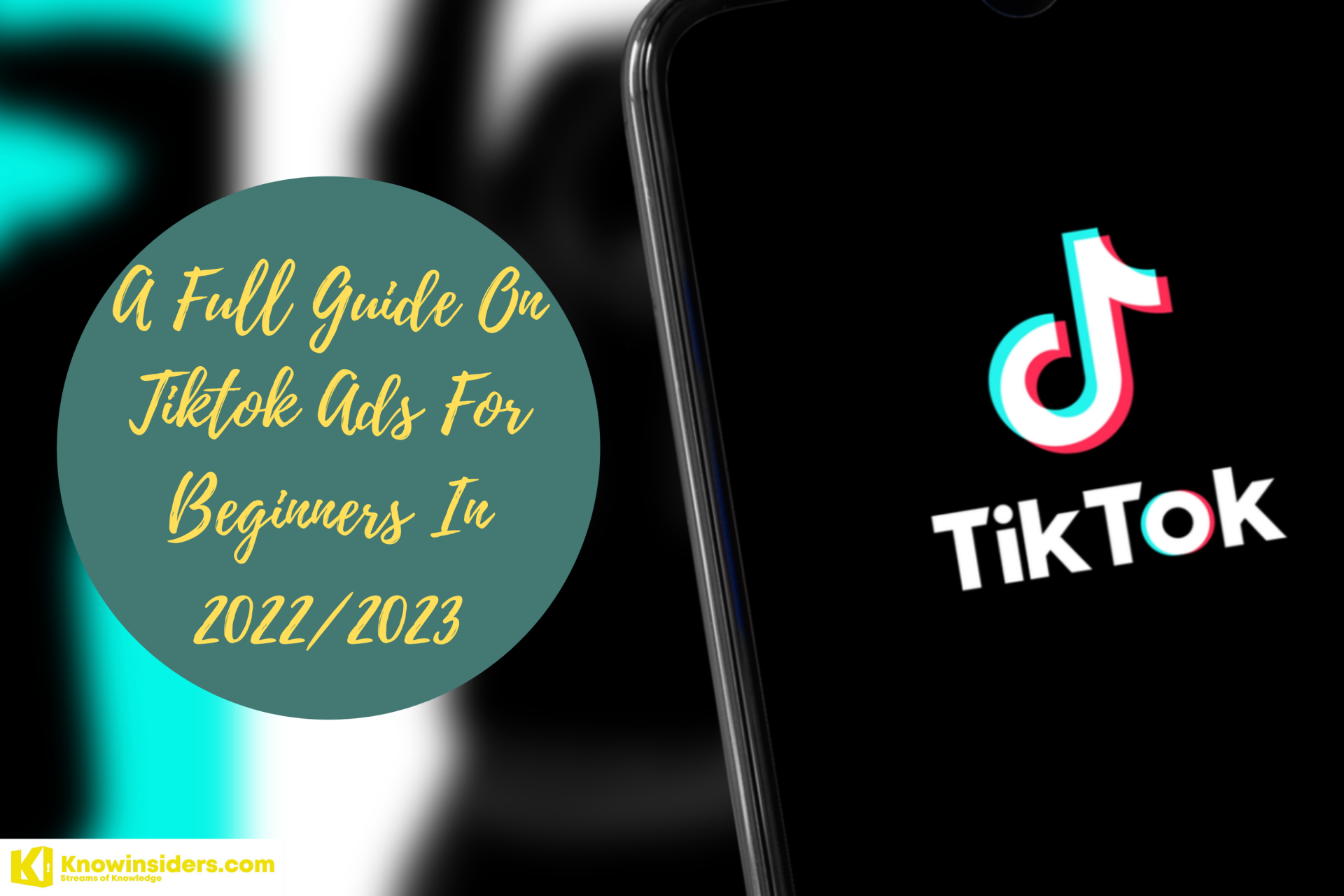 A Full Guide on Tiktok Ads For Beginners In 2022/2023 - Simple Steps A Full Guide on Tiktok Ads For Beginners In 2022/2023 - Simple Steps In this post, learn the TikTok advertising basics, best practices, and expert recommendations that will give you an edge over your competitors! |
 20 Best Sites to Buy Followers for Tiktok from Anywhere In The World 20 Best Sites to Buy Followers for Tiktok from Anywhere In The World Do you want to have thousands of followers on TikTok? These sights will turn you into a thousand follower TikTokers right away. |


























